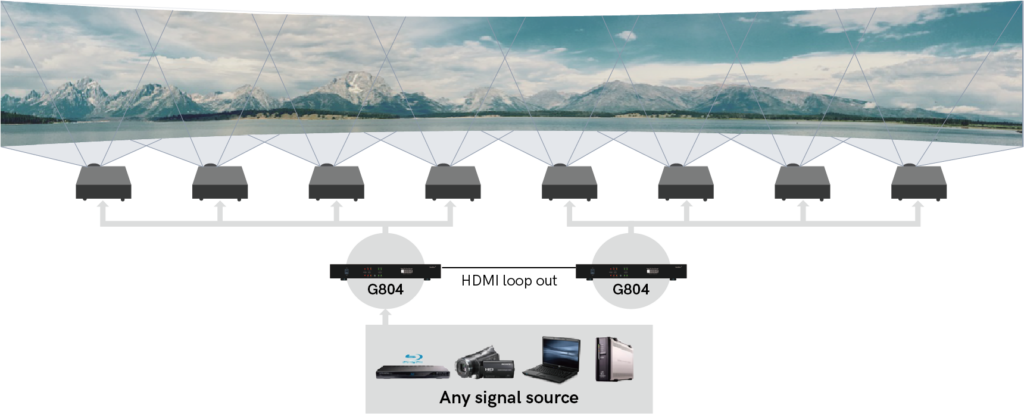
In the Catalyst Control Center, expand the “AMD EyeFinity Multi-display” tab on the left.

#EDGE BLENDING WINDOWS#
To set up EyeFinity, right click on the Windows desktop and select “Catalyst Control Center”.
#EDGE BLENDING DRIVERS#
We recommend using the latest AMD drivers for your card which can be downloaded at
#EDGE BLENDING WINDOWS 7#
This way all displays will run off the same internal clock on the graphics card.ĮyeFinity requires at least Windows Vista, Windows 7 or Windows 8.

Tip: for best results, it is recommended to connect all the projectors from DisplayPort connections where possible. Using passive adapters will result in the projectors being seen in the list of available displays but unable to display signals at higher resolutions.Ī list of compatible adapters is available here: To use more than 2 projectors off a single graphics card, you need to connect the additional projectors through the card’s DisplayPort connectors, using active adapters. Some cards will support EyeFinity with 4, 5 or 6 Mini DisplayPort connectors, which allows up to 6 displays to be used at once.

Other cards have 2 DVI, one HDMI and 2 Mini-DisplayPort connectors which allows up to 4 displays to be used. Most consumer cards (at the time of writing) have 2 DVI, one HDMI and one DisplayPort connector, which enables them to drive 3 displays at once. We recommend checking outputs of graphics cards prior to purchase to ensure these meet your requirements. Although a card maybe the same model number, the outputs connectors could vary between manufacturers.
#EDGE BLENDING SERIES#
AMD graphics cards that support EyeFinity include the Radeon HD 5000 series and up, and the FirePro V series.ĭifferent manufacturers implement different connections on their graphic cards. This White Paper will guide you through the setup of EyeFinity with multiple projectors on your AMD graphics card so you are ready to use Blend, Warp and SimVisuals.ĮyeFinity is an AMD technology that is available on a number of consumer and workstation graphics card. AMD EyeFinity is able to set up from 2 to 6 projectors in a number of configurations. A single Windows Desktop can then been seen across the entire display so applications can be run in full-screen mode across multiple displays. You would need to replace all the bulbs each time one failed to ensure similar characteristics and some additional calibration would probably still be required to produce ideal picture quality.This White Paper will guide you through the setup of EyeFinity with multiple projectors on your AMD graphics card so you are ready to use ImmersaView Blend, ImmersaView Warp or SimVisuals products.ĪMD EyeFinity lets you group monitors or projectors to form a single spanned display.

If multiple lamp-based projectors are used, not only would the bulbs fail regularly, they will dim at different rates, causing color and brightness shifts. Projectors with laser light engines offer a significant advantage over a bulb-based system in a long-term projector blended installation. Laser projectors are ideal for edge blending applications. However, Edge Blending can’t be combined with pixel shifting but that is okay in many situations where maximum flexibility is more important than absolute resolution. The result is an image that looks seamless, like it’s being displayed by a single projector. You can use the projector’s Black Level setting to make the difference even less noticeable. Under the Blend Range menu’s sub-setting, you can fine-tune the blend’s starting position and the width of the blended area. If you need more light output or want to utilize multiple projectors to display a larger, wider aspect image, many projectors are equipped with several features to make that goal easier.īy utilizing Edge Blending, you can split an image over multiple projectors and display it as one large image while reducing the hard transition from one projector to another.


 0 kommentar(er)
0 kommentar(er)
